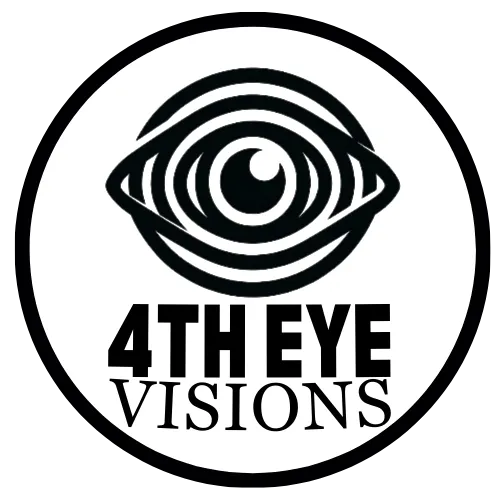VIEW THE LATEST FROM OUR BLOG!
Welcome to the official blog of 4th Eye Visions, your premier destination for exploring the revolutionary world of cryptocurrency investing and blockchain technology. Here, we delve into the nuances of digital currencies, offering expert insights, latest trends, and actionable strategies to empower you to thrive in the Fourth Industrial Revolution. Whether you're a novice seeking foundational knowledge or an experienced investor looking to expand your portfolio, our blog provides valuable resources to help you navigate and master the dynamic landscape of digital finance. Join us on this journey to transform your insights into lasting legacies.

Apple and OpenAI: A Powerful but Concerning Alliance
AI Partnerships and Privacy Concerns: A Deep Dive into Apple and OpenAI's Collaboration
Introduction:
As someone who has always kept a skeptical eye on the tech world and its leading figures, I can’t help but reflect on Elon Musk's journey. Once a co-founder of OpenAI, Musk now questions its trajectory, a sentiment I find increasingly relevant.
Could Musk morph into a supervillain? That remains a playful speculation, but his apprehensions about privacy and the potential risks of AI are well-founded and echo my own.

With that said, here are 8 reasons why you should start blogging on your website today! 👊
The Evolving Landscape of Data and Compute
In today’s digital age, data isn’t just a byproduct of our online activities; it's the new currency. The companies amassing the most data are expanding rapidly, feeding on this information to fuel their growth. Sam Altman, CEO of OpenAI, has provocatively stated that "compute is the greatest currency in the world." This assertion highlights a shift where raw data and computational power are becoming invaluable assets, fundamentally changing how we understand value in our economy.
Apple and OpenAI: A Powerful but Concerning Alliance
The partnership between OpenAI and Apple marks a pivotal moment in the AI landscape. Apple, known for its closed-source ecosystem, integrating with OpenAI, presents a powerful combination. Imagine the implications of having an advanced Large Language Model (LLM) like ChatGPT embedded in every Apple device. It’s a scenario that could revolutionize user experience but also raises significant privacy concerns.
This partnership mirrors Microsoft's approach: creating essential software, then controlling the ecosystem, sometimes playing the dual role of both creating the problem and selling the solution. While it might seem far-fetched, it's worth pondering whether such strategic moves might compromise user privacy for corporate gain.
When OpenAI introduced its assistant, Sora, during a CTO interview, there was a telling moment of hesitation when asked about using content from YouTube. This pause wasn’t an outright admission but should certainly raise eyebrows. It suggests a complex web of data sourcing that might not always be transparent to users.
The Exploitation of Personal Data
One of my central concerns is how our personal data is handled. With cloud storage, data servers, and ubiquitous devices, every interaction—whether typed, spoken, or merely implied—could be stored in a digital profile. The extent of this data collection might make the common belief that our devices are always listening more credible than we think.
Terms and conditions often grant these companies access to microphones, cameras, contacts, and locations. Combine this with applications and devices feeding data into centralized servers, and we find ourselves in a world where privacy is not just at risk—it's systematically harvested.
Apple's Leverage in the AI Race
Apple, with its recent partnership, is leveraging OpenAI’s advancements to boost its position in the AI race. As a closed-source powerhouse, Apple has always been secretive about its data practices. This alliance only amplifies concerns about what data is being collected and how it might be used.
The Role of Blockchain-Based AI Models
This scenario underscores the importance of open-source AI models, especially those based on blockchain technology like Bittensor. Such models offer transparency and decentralization, providing a glimpse of what responsible AI development could look like. They represent not just a technological innovation but also an investment opportunity for those seeking ethical alternatives in the AI space.
Invest in Ethical AI and Stay Informed
If you're interested in exploring investment opportunities in the ever-evolving world of AI and cryptocurrency, I invite you to subscribe to my newsletter. Follow me on social media for the latest updates, and for real-time, actionable advice, consider joining my private community, the “Visionary Village.” Here, we conduct weekly coaching calls, record workshops, and provide live fundamental analysis to keep you ahead of the curve.
Checkout the latest Livestream from my YouTube!
Key Takeaways:
Data as Currency: Understanding that data and compute are becoming new forms of currency.
Privacy Concerns: Recognizing the potential risks of AI partnerships on user privacy.
Open Source vs. Closed Source: Valuing the transparency of blockchain-based AI models over closed-source systems.
Investment Opportunities: Staying informed and seizing opportunities in the evolving AI and crypto landscapes.
Together, we can navigate these complexities, ensuring that our digital future remains as transparent and secure as possible.
Get In Touch



